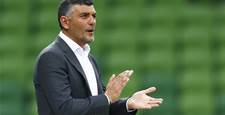
"Children are like wet cement. Whatever falls on them makes an impression" - Dr Haim Ginnott
As a coach I often ask what is it that children expect when they come to football practice? On a more fundamental level I ask what is it that children think football is?
I'm sure for many children football is waiting in a line to kick a ball at an adult. At least that is the impression I get when I see a lot of the practices coaches prepare for their players.
Let's face it, as coaches have learnt more and more about the importance of technique we have also moved our practices further and further away from the game.
As important as repetition is to developing sound technical skills, these movements cannot be decoupled from the game in which they are meant to be used. It's the dynamic, ever-changing and random situations which make the game of football so exciting to watch and play in the first place.
Sadly, we all too often see coaches throwing the baby out with the bathwater. They spend their entire session coaching the correct execution of their carefully designed practice and fail to develop the real skills which players need to be successful; the ability to assess dynamic situations, make the best decision and then execute the movement at high speed and under pressure.
This approach is rarely the fault of the coaches. On many of the traditional coaching courses straight lines of cones, neat rotation of players and exact movement patterns have been lauded.
Practice Makes Perfect
But - and this isn't a revolutionary thought - we don't want players to perfect standing in lines, we don't even want players to perfect following instructions, we want players to perfect understanding and performing in the game. It's then blindingly obvious that our practices need to be games.
In games players can attack and defend and learn to transition - so the three moments of football covered.
In games players can pass, dribble, run with the ball, shoot, head, volley, tackle and block - so every skill is covered.
In games players can be ahead, be behind, win, lose and draw - so psychological aspects are covered.
In games players jog, sprint, twist, turn, jostle and jump - so physical literacy is covered.
Most importantly, in games players must react, make decisions, communicate and perform under pressure - so it is realistic to the situation they are dropped into at the weekend.
In fact, if there's something that doesn't happen in a game do we, as football coaches, need to be practicing it?
Retaining Focus
If we want players to get better at football, the starting point for all practices has to be the game itself. As coaches we must always make every effort to ensure the tasks we set our players include attacking and defending space and the opportunity to score and concede goals.
Crucially, practices must challenge players to make lots of decisions in a picture which resembles closely that which they will see in a competitive game.
Within our games we can then adjust the rules to provide the focus for our session.
There are a huge number of possible conditions you can use to adjust the challenges players face, in order to emphasise the use of a chosen skill, the frequency at which a particular situation arises or to better demonstrate the tactics you have chosen to coach in your session.
In the next article in this series I will outline the three main types of condition.
In the meantime have a think about your favourite practices and whether they are teaching players to perform the practice or to perform the skill?
If you are coaching this week, perhaps experiment with more games and less drills. See if you can still deliver your coaching points in the more dynamic environment and please provide any feedback in the comments below (or @reply to me on twitter).












